Club Lotus Australia is full of interesting people doing interesting things with interesting cars.
We want to tell their stories, and through this develop and preserve a written history of the club, its members and their cars. So, whenever we have the opportunity, we enjoy a chat with one of our members to share their story with you right here on the Club website!
This month, we get to know one of the pillars of the Aussie club motorsport community, artist, historian and gentleman Brian Caldersmith.
Brian. I got my start in motor sport helping out as an underage assistant flag marshal at Parramatta Park in the ‘50s. From there I started going to race meetings at Mount Druitt and eventually became a member of the AARC, for whom I worked as an official at Warwick Farm.
I had a great experience there working as a mechanic to Ron Flockhart during the 1962 International 100. That was the first time I had been paid to work on a race car. Along with that came other benefits – like being introduced to Jim Clark.
Ron was a real nice guy (as was Jim) and one of the unassuming Le Mans winners. In 1962 he came out to introduce the Mini Cooper to Australia and he drove his race car to all the meetings with his wife. He blew everybody away on the track and then drove the car back again.
There are thousands of stories, many not for publication and several should never be repeated, but one I like is Ian Scott-Watson’s tale about the Le Mans race with Jim Clark & John Whitmore in his Border Reivers entered Elite.
The Elite destroyed two Lucas starter motors during the race and there was some sleight-of-hand required because you were not allowed to change them.
The first time, it was finally pulled out of the car and tossed enthusiastically onto the bench so that it fell over the back. Whereupon the mechanic leant over and grabbed the stashed new one, pretended to repair it, and then reinstalled it.
The second time, the “hot” starter was thrown into a bucket of soapy water supposedly to cool it, allowing them to pull out the new replacement. The French commissar in charge of their pit gave Ian a slap on the back and in FrancAnglais said, “Very good acteeing!” He did not want to see his Scots team disqualified. Entente Cordiale.
CLA. You’re heavily involved in several Australian car clubs. How did that all begin?
Brian. My first club was the North Shore Sporting Car Club. Through that, I became a founding member of the Amaroo Country Sporting Car Club. I actually helped to build that circuit, and went on to play a role as an organizing committee member for the first few meetings held there.
Amaroo was essentially started by the owner of the property, Oscar Glasser and a bunch of guys from the North Shore Sporting Car Club.
Oscar owned North Shore Traders and loved driving bulldozers and tractors around his property. He would literally get on a D9 and create a sprint circuit. There was physical work involved as well – standing on the back of his tractor banging in steel posts to mark out potential dummy grid locations etc.
As founders of the Amaroo Country Sporting Club we paid £60 for a debenture which paid interest in the form of the annual membership. It was to have a full GP circuit, a drag strip, speedway, hillclimb, dirt circuit, swimming pool, shooting range, tennis courts etc. etc. I am glad that before the bitumen went down, I walked around it and photographed the circuit.
The Australian Automobile Racing Club was THE club to belong to in the 60s if you were into racing. The AARC ran the Warwick Farm meetings and their club meetings were held at the Uni of NSW with a huge turnout and there was always a film or two to watch. Geoff Sykes was a great leader and it was the Golden Era.
I was involved with the HSRCA from the early days on race committees and as Vice President and Secretary. Back then, 120 people would turn up to the Crows Nest Club for a meeting with standing room only at the back.
The club was very progressive and we introduced Group Sb to historics (for Elans) and the now very large Group N. I wrote the CAMS rules for what was then just Na. I also introduced the first longer distance races to the Fifth Category. Until then, they were all relatively short races that were not reflecting what used to happen in the period. Our first was a 20-lapper at Eastern Creek.
The early historic meetings were great. Everybody knew everybody and we were all involved in a new and growing thing. Initially, the 1960s cars were the latest stuff running and as is the nature of the sport, more categories were added as time went by. The inaugural meeting at Eastern Creek brought with it the first entry list of over 400 cars. There are now so many classes in the 5th Category that it is almost impossible to run a meeting that includes all of them.
We started CLA in 1973 after a bunch of guys answered an ad in the Herald placed by David Levy. Spencer Bates was elected inaugural President and we gave Adrien Schagen membership #1 because he had owned a Lotus longer than anybody else.
Bill Wade was there, Graham Howard, and Richard Nissen were some I remember. I got the job of Registrar and spent several years on the committee .
More recently I was made an honorary member of the Australian Racing Drivers Club.
In the early ‘90s I started WHEELS Bookshop in Parramatta and sold it in 1996 when I retired. Shortly after, I started a luncheon gathering for lotus Elite enthusiasts called LEADFOOTS (Lotus Elite Association of Followers, Owners, Operators, Tinkerers & Suchlike).
LEADFOOTS was just an excuse for likeminded souls to gather and talk about a limited range of subjects. About 15 turned up. That has since grown to encompass anybody with an enthusiasm for racing in the 1950s & 60s. Now a great cross section of drivers, mechanics, journos, owners and enthusiasts turn up to eat, drink and talk a great deal. 40 to 60 regularly attend – at an over-night meeting in Goulburn 120 people turned up!
CLA. Why are you so interested in history?
Brian. To me, history is important, because it is the backbone on which so much stuff lives and thrives. It is the DNA of our sport and our cars and the only way to fully appreciate what we’ve got and where we are going. And I guess I’ve been there for some of it as well.
CLA. Tell us a little about your cars.
Brian. My first car was a triumph TR2, followed by the original series 850 Mini and then a delightful 3.8 MK2 Jaguar.
The little Mini caused a stir when a sighting was reported in one of the car magazines of the time. I had an Elite steering wheel in it and a Lotus badge on the grill a la Lotus Cortina. I’d also put a “caution Girling disc brakes” sign on the rear window and had removed the over riders from the front and rear bumper bars.
It was just enough to make the car look different, but not especially obvious. It was inevitably surrounded by people whenever I returned after parking it.
The TR I found in an ad in the Herald one Saturday morning, went to see it – and bought it for £615. After the Jag I went on to own a stream of forgettable nebulous family things that were not worth photographing!
CLA. And how did you find your way to your first Lotus?
Brian. My first (and only) Lotus was/is the Elite. I had always wanted one, lusting after them from when they were released. I was tipped off that Barry Bassingthwaighte (who used to race Cortinas) had one which had caught fire driving home from work. He had had enough of it! I went to see it – and bought it.
It had been through many owners in its life including Ron Brock, who had Peter Toohey race it for him at Warwick Farm. The intriguing coincidence being that Peter did all the art and programme covers for the AARC, as I have done for many meetings.
I spent ten years restoring it – and having a family – and spent another 30 racing it in historics around Australia. I took part in the inaugural historic race meetings at Oran Park, Wakefield Park, Sandown and Phillip Island. I even brought Oran Park full circle, taking part in the final historic race meeting there. The sad one was the final meeting at Amaroo in August 1998.
CLA. Tell us about racing the Elite
Brian. The Elite is a delight to race. You think they are good on the road, but you don’t find out just how good they are until you race one.
Rain is a good illustration. At an appallingly wet Oran Park meeting, I got pole and 3 outright wins against stuff I couldn’t catch in the dry. It wasn’t me – it was the Elite! The drenching rain eliminated the horsepower advantage of the big stuff and I had a ball. At the end of the first 5 lap race, second place was 30 seconds back! Unlike many, I enjoyed wet meetings.
I used to love Amaroo, except for the start. Sitting on the grid, you’d look at the hill ahead and know that the next two rows sitting behind you would go by as we took off. You’d then spend the rest of the race getting back to where you were before it started.
It was at Amaroo where I scored one of my favourite photos – Stirling Moss presenting me with one of the RAC Trophies.
Another highlight was sharing my Elite with Sir John Whitmore. I knew John from some years before and persuaded him into coming out for the Tasman Revival. I offered him my Elite to run in the scratch races, while I drove it in the handicap events. I also wanted to see what I could learn from Jim Clark’s co-driver. It was very informative and we had a lot of fun.
He agreed to come out again a few years later for another Revival. This time I organized for him to run in Alan Cruikshank’s Elite so we could run together. I suspect, however, that John was a very polite invitee, because I was a touch quicker than him at both meetings.
I am proud to say that some time back, Ian Scott-Watson gave me written authorization to use the Border Reivers logo on my Elite – but it must be removed if I sell it!
CLA. Tell us about those last meetings at Amaroo and Oran Park.
Brian. I have put a video on YouTube of the last race at the last historic meeting at Oran Park. Not good quality, but at least it is on record.
The last meeting at Amaroo was emotional, certainly for me.
A mixture of historics was invited to be part of the farewell and we rigged our last race. A well-known member of the HSRCA, Peter Mohr, had been at the very first meeting there in 1967 and won the first race ever held on the circuit (I was on the race committee). So we got together without telling him and eased off appropriately, so that he won again at the last meeting in 1998!
CLA. Have you owned or desired any other cars that stand out to you?
Brian. I imported an Elva Courier from America a while back and got 75% of the way through its restoration when I realised I didn’t want it. I couldn’t race 2 cars in the class and I didn’t want to stop running the Elite, so I sold it. Rick Marks has just sold it to a new owner.
The Elite I have had for well over 40 years and raced it for 30. It is a superb and enjoyable racecar. I have tried others but none give the same pleasure or satisfaction to race (in that category).
I only ever wanted 3 cars. A Lotus Elite, a GT40 and that gorgeous 1.9-litre P261 BRM Graham Hill drove here in the Tasman in 1966. I got the Elite forty something years ago and can’t afford the others.
CLA. Are you interested at all in modifying or restoring the cars?
Brian. I used to do everything on the car from restoration to race preparation, but now my knees, back and arthritis somewhat limit me. I need a body restoration!
However, everybody should be reminded of the Rule of 8 as published in the famous A-Z of Classic Motorsport viz.
All restorations:
- Take 8 times longer than planned.
- Cost 8 times more than budgeted.
- 88% are never completed.
CLA. What have you learned through this journey?
Brian. I have learnt that whatever you think of the cars, it is the people that make it all worthwhile!
CLA. As we said in the intro, Club Lotus Australia is full of all interesting people doing interesting things. You have a wonderful talent for art and design, and your work is iconic in our motor sport scene – tell us a little about it.
Brian. I spent 25 years working in the appliance industry. In the latter of those years I was working in the corporate side of the business, but I got my start as a draughtsman. I also worked in Computer Aided Design at the start of the ‘80s, which brought me back towards those skills.
The “training” is all self-taught. I use the Suck it and See technique.
I guess my draughting and engineering background is responsible for my interest in detail. That and the fact that if you paint somebody’s car and it has 23 louvres, they will know if you only put 22 on it. People are very sensitive to the subtleties of their vehicle!
It is satisfying when you get a comment like Graham Howard’s when he saw the watercolour of his Lotus 6, “Spot on,” he said, “I never could get the top left hand side of the bonnet to fit exactly. You’ve got it right.”
These days I paint Car Portraits for enthusiastic owners and provide art for automotive events and limited edition prints. I published a book back in 1996 ‘A-Z of Classic Motorsport’, which found success amongst the fraternity.
CLA. You have such a great connection with motorsport, its people and its history. I’m sure you have enough stories to fill a few volumes.
Brian. Chris Barber came to my place for a barbecue during his last Australian tour. He has spent the last 67 years as a jazz band leader. He’s still touring, and he is a living legend.
During the visit we took the opportunity to re-create a photo featured in a few books. It was taken when he took delivery of the first production Lotus Elite. We also learned that the clinch to the sale was that his trombone would fit in the boot!
Chris raced Elites, Elans and a 47 before he hung up his helmet, and also had others race his cars, including Sir John Whitmore. He was at the famous 1959 Boxing Day Brands Hatch meeting in which Jim Clark, Colin Chapman and Mike Costin battled it out for the win and four Elites took the top four spots.
I was chatting with John during one of his visits and it became apparent that he and Chris had fallen out of touch since those days. So, I took on the task of arranging a gathering.
That gathering had to coincide with my visit to the United Kingdom, John’s availability and Chris not being away on tour. Eventually we were able to set a date – Chris was driving home from Heathrow after a tour and Warren King was coming down from Norfolk.
Warren King is an expatriate Aussie who went to the UK with my brother back in the late ‘50s, and stayed there working for Lotus until he retired. Along with the many stories from that time, he actually spent several days on the witness stand in the De Lorean trial in the United States – another story for another time.
Nobody wanted to park in the city, so we met for dinner in the Old Manor Pub at Potters Bar well north of London. We enjoyed a great evening together, sharing some truly marvelous stories – and I came away with a new bunch of Chris’ jazz CDs.
Bringing those two compatriots together again is something I’m very proud to have achieved.
CLA. Let’s get back to the Club. What draws you to it, and keeps you involved?
Brian. Having been there at the beginning of CLA, it is not something you can easily walk away from. It is good to see it grow and whilst I don’t have the time to put in that I used to have, I like to contribute in some way. The friendships are important to me and cars are a great way of bringing people together.
CLA. Thanks so much for chatting with us Brian, and for sharing some of your wonderful story!
Brian. No, thank you. I’ll talk about cars and our sport anytime.
You know what it is like – enjoying ourselves in an activity full of marvelous people, experiencing the whole spectrum of emotions as we punish our cars, families, bodies and bank balances. The social and competitive sides meld and sometimes the racing becomes incidental. There have been times when I have thought, “I cannot believe how much fun I am having. Retribution must be around the corner”.
A huge ‘THANK YOU!’ to Brian Caldersmith for sharing these stories and photographs with us. Hit this link to his website to check out more of his art.
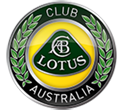
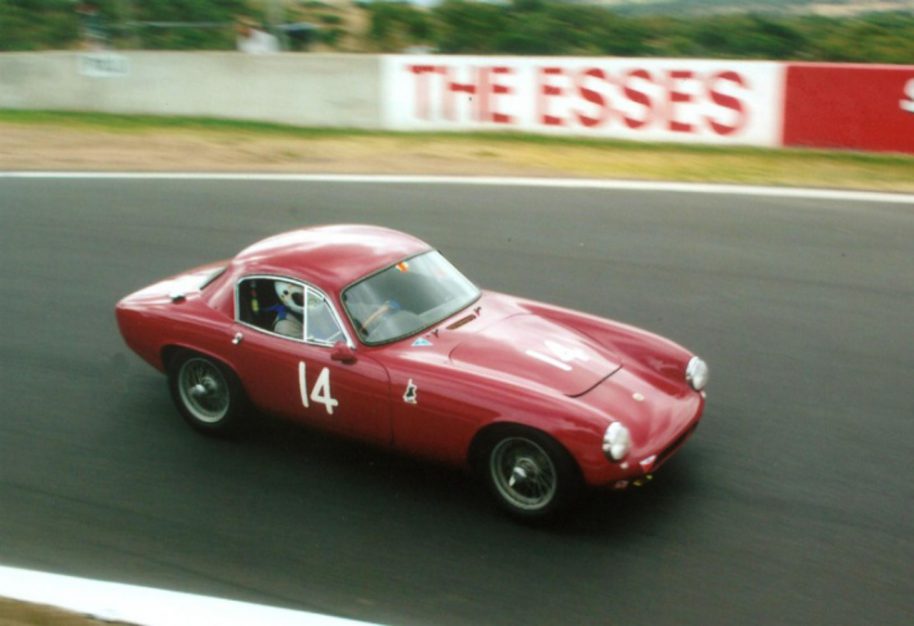
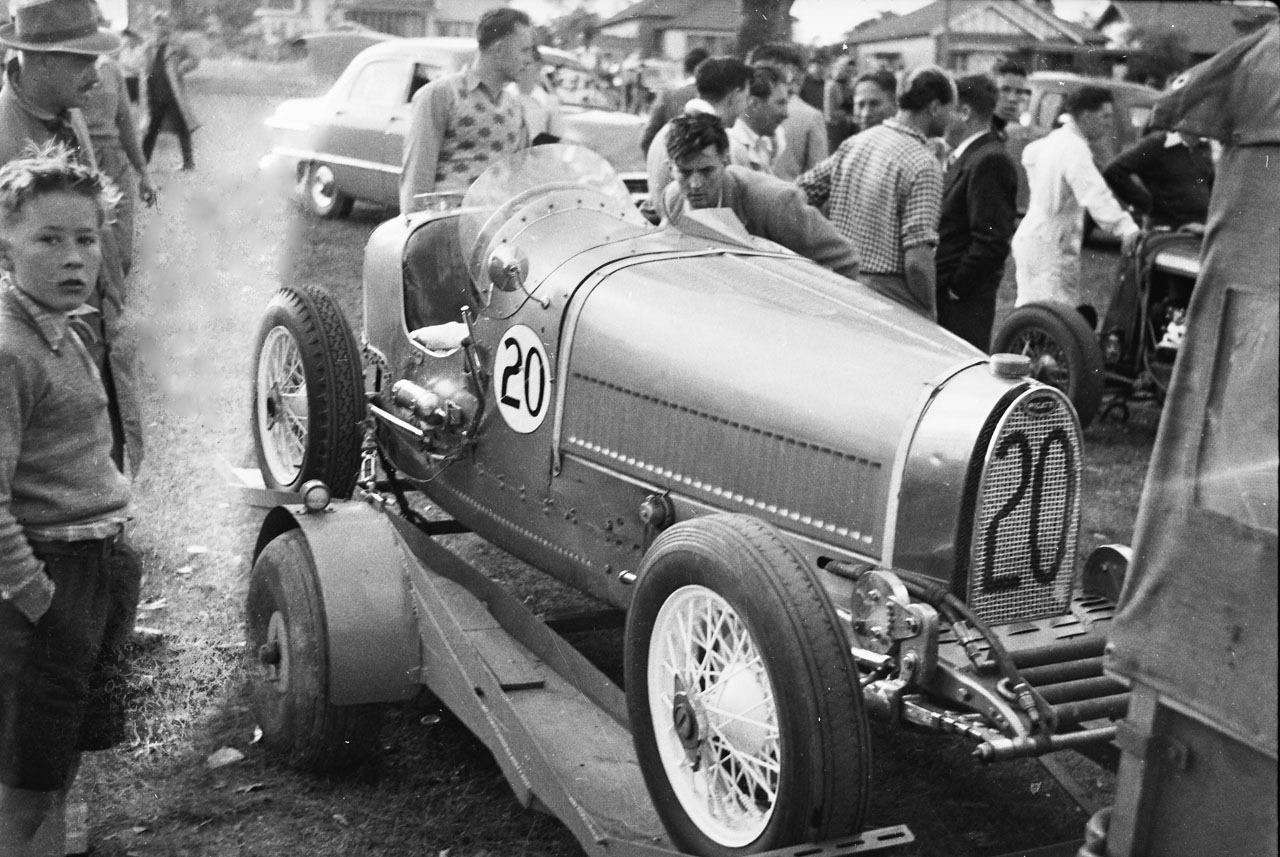
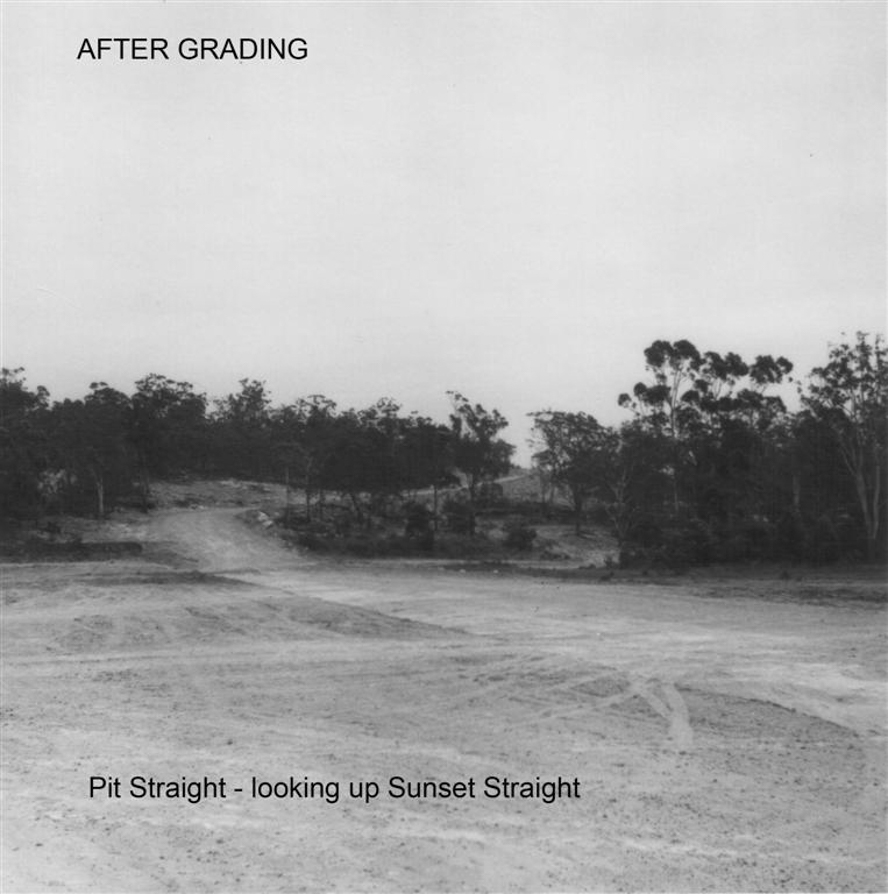
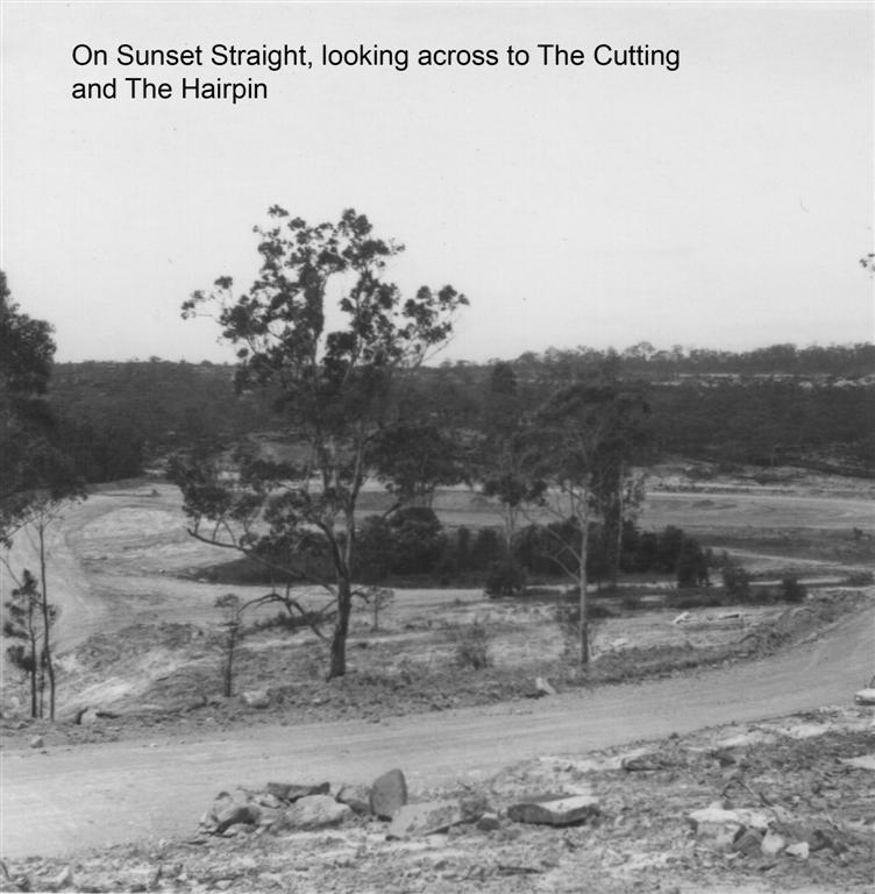
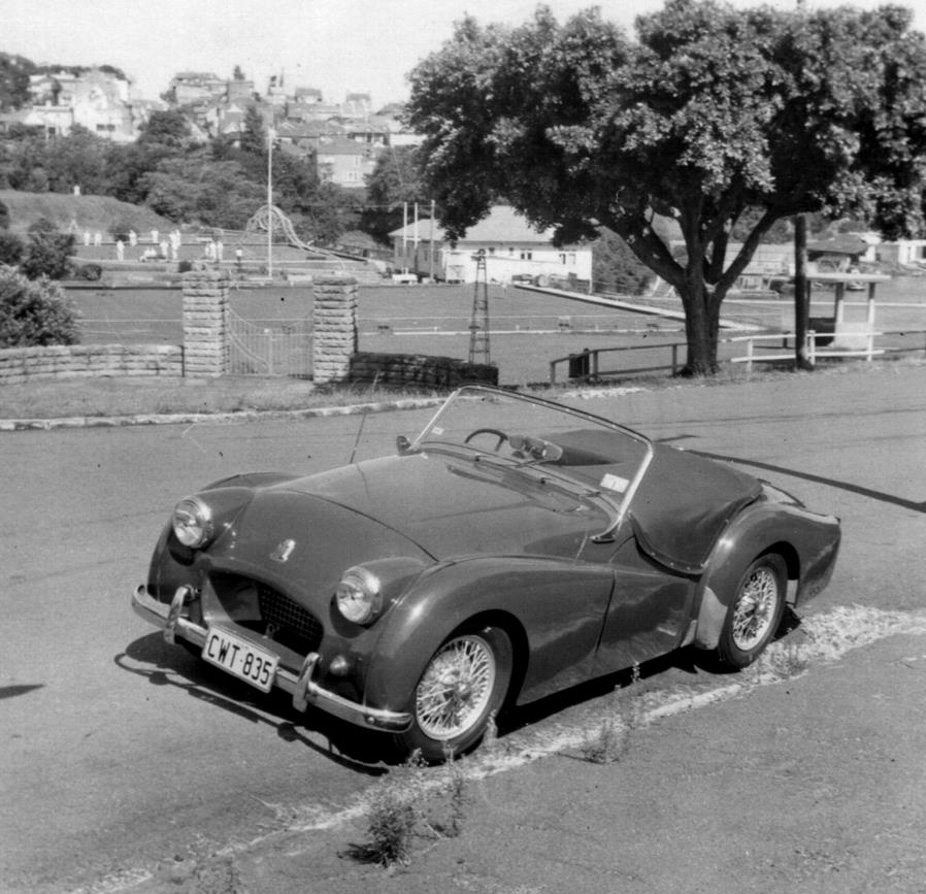
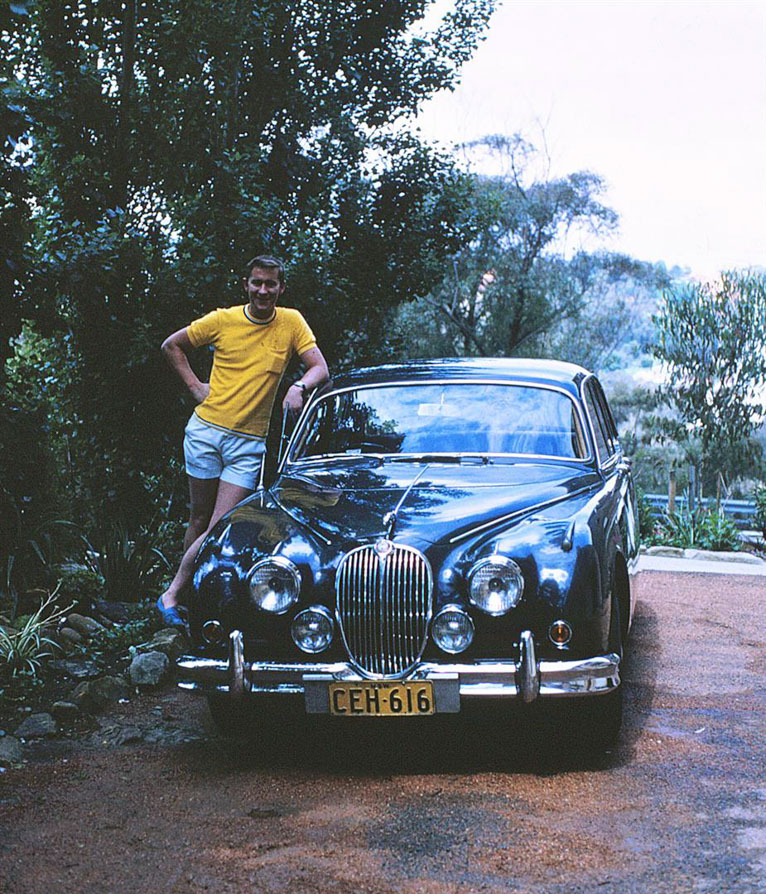
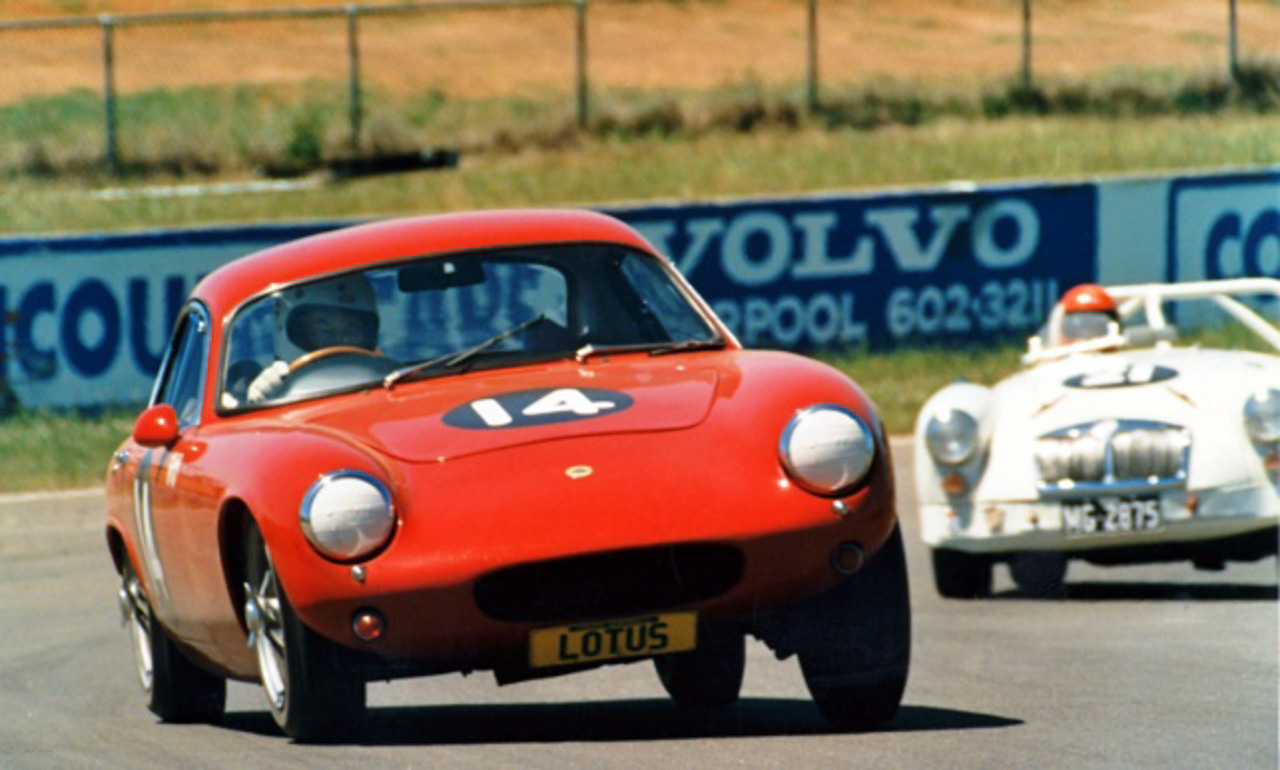
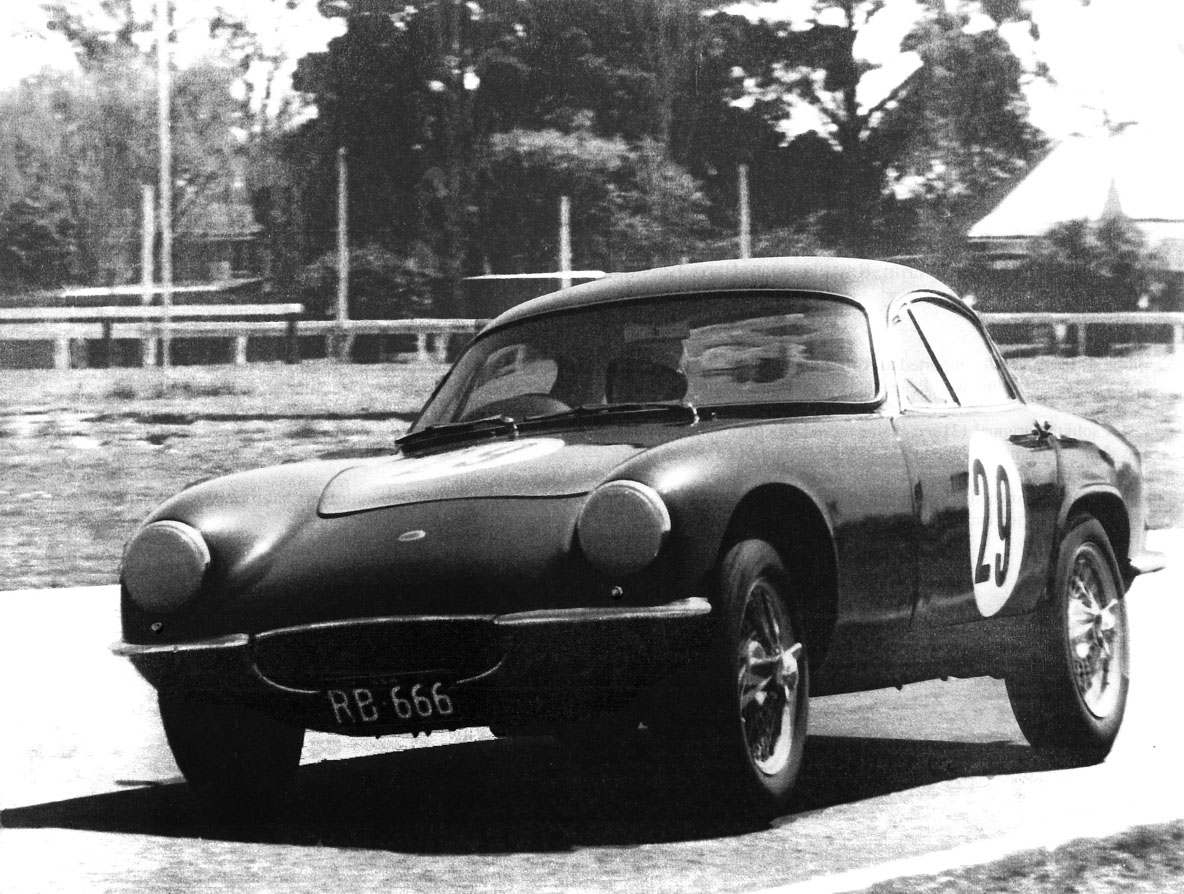
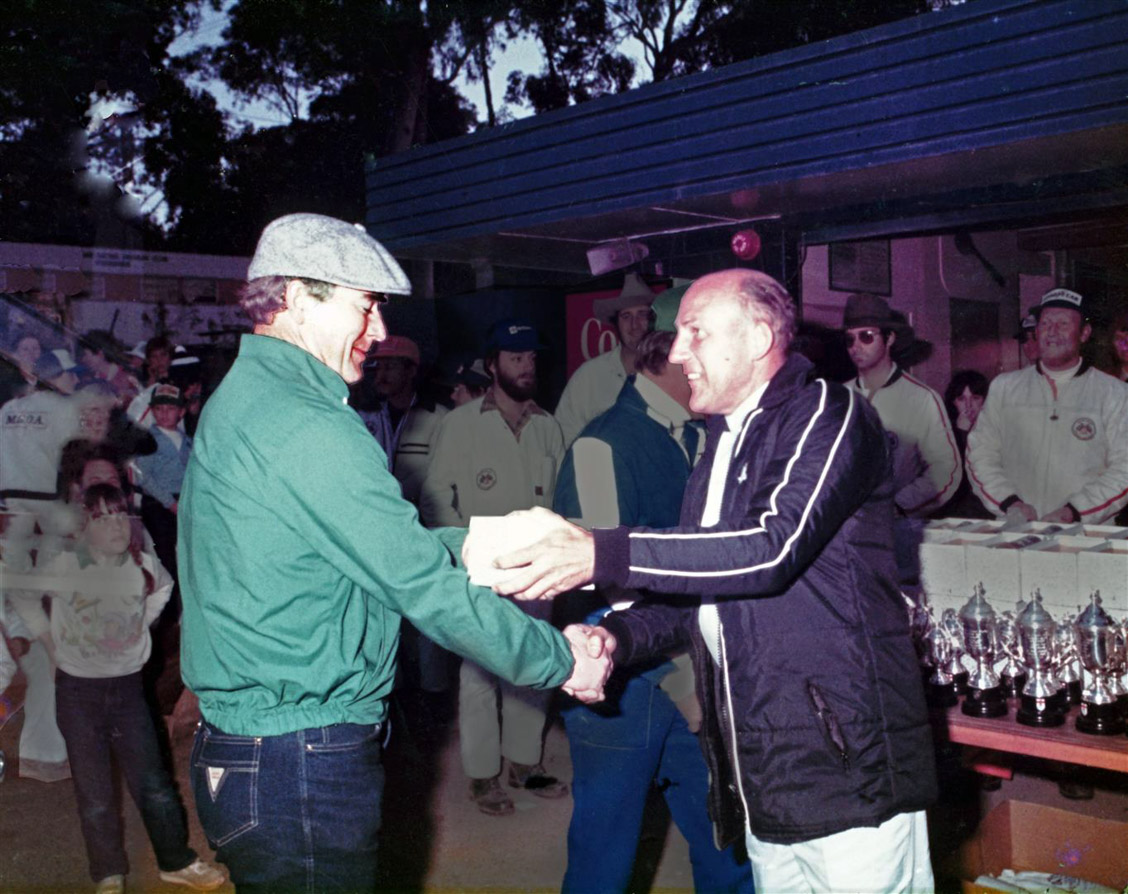
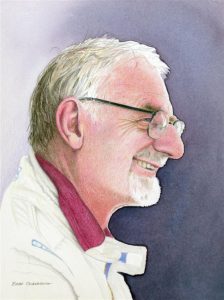
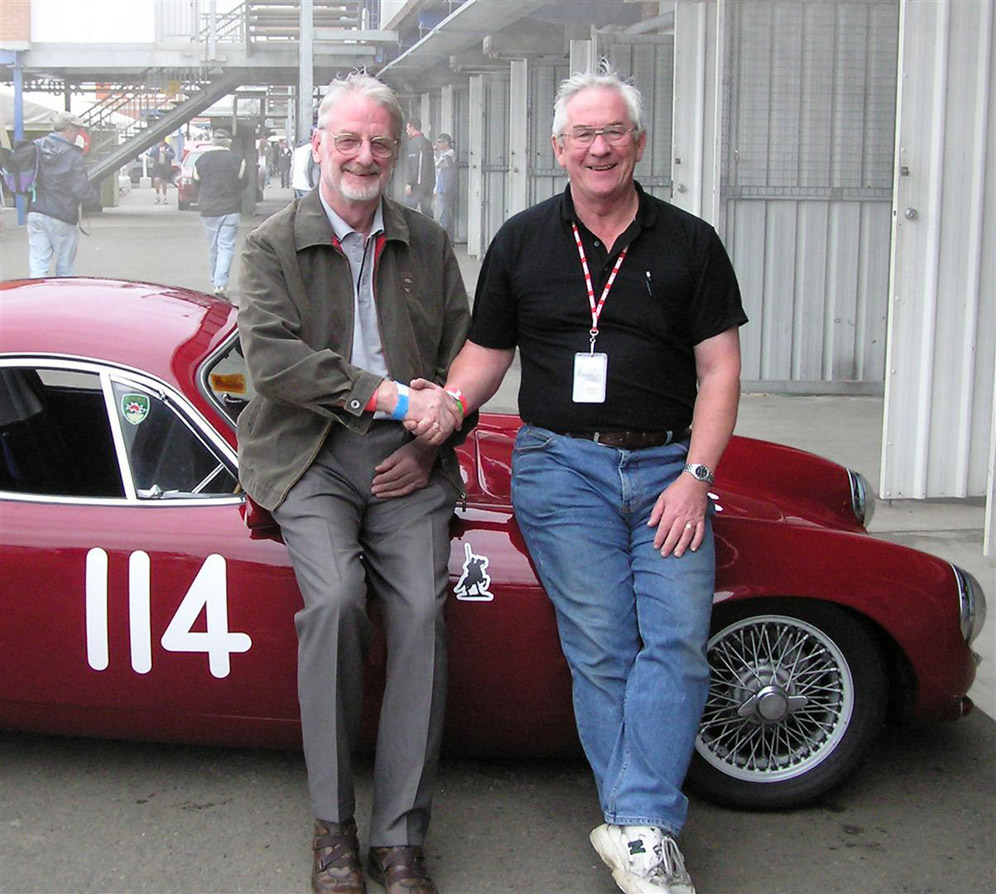
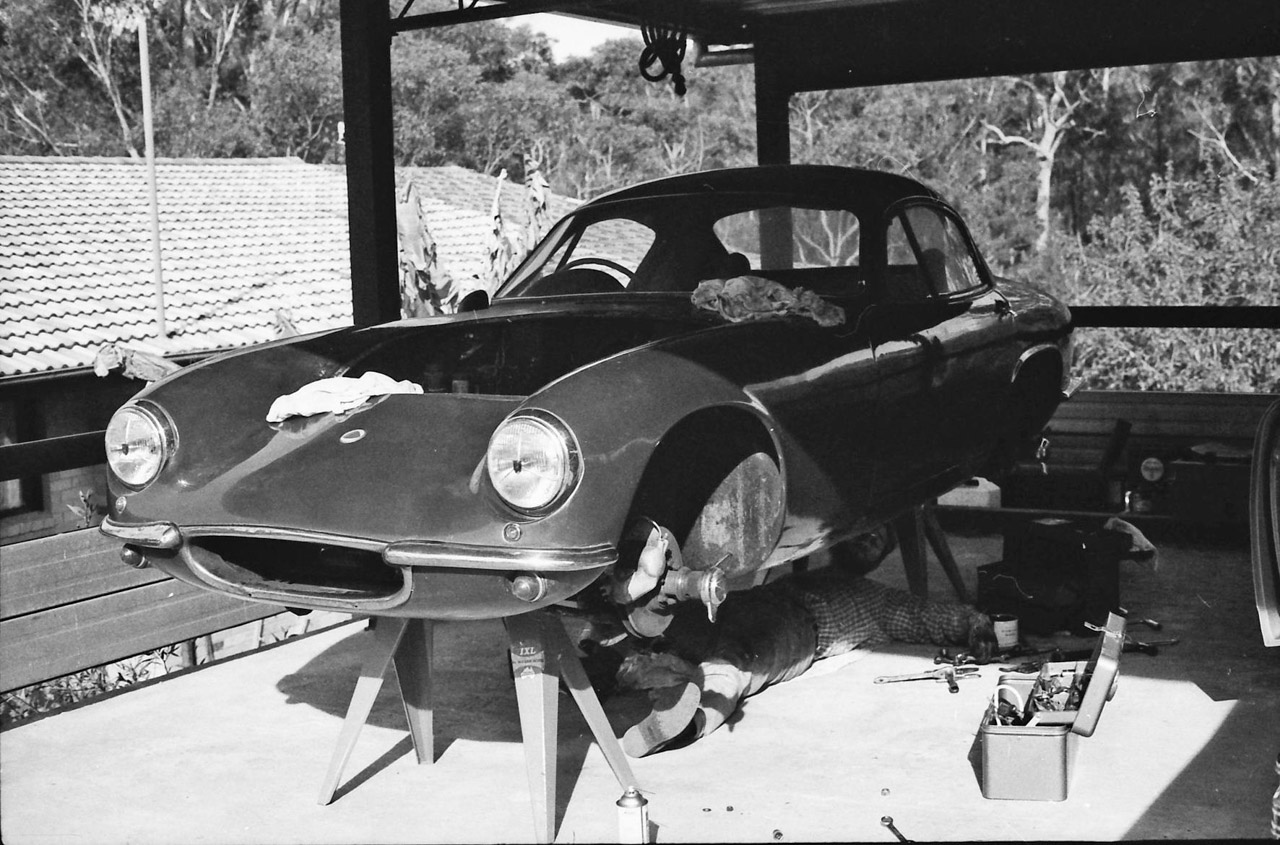
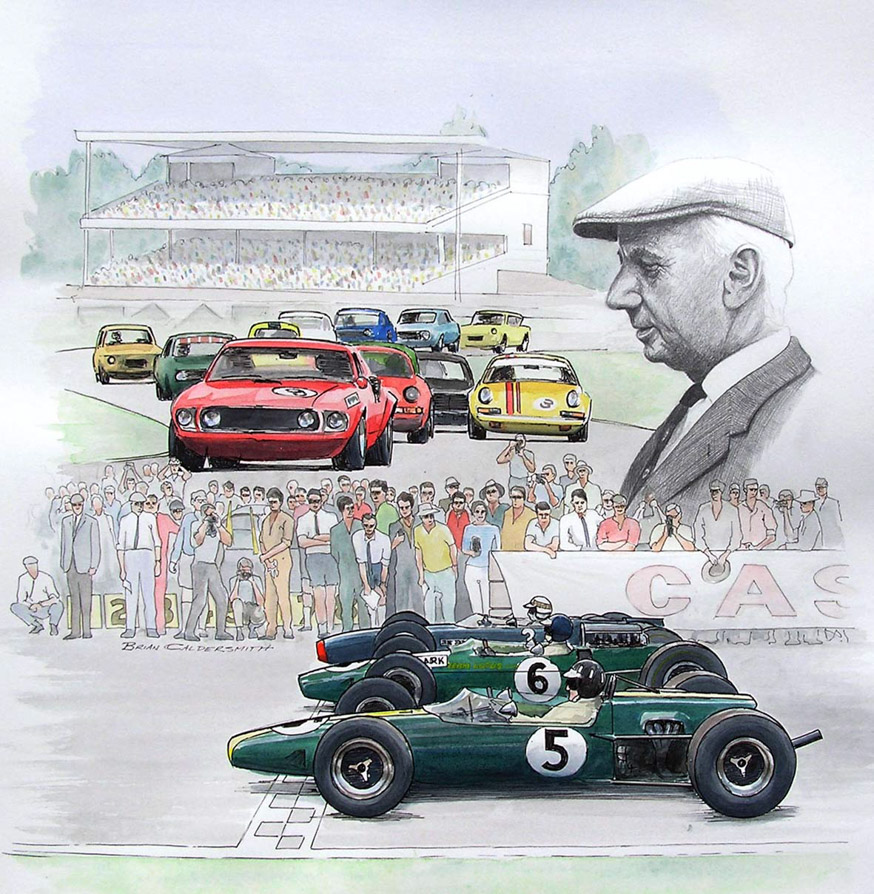
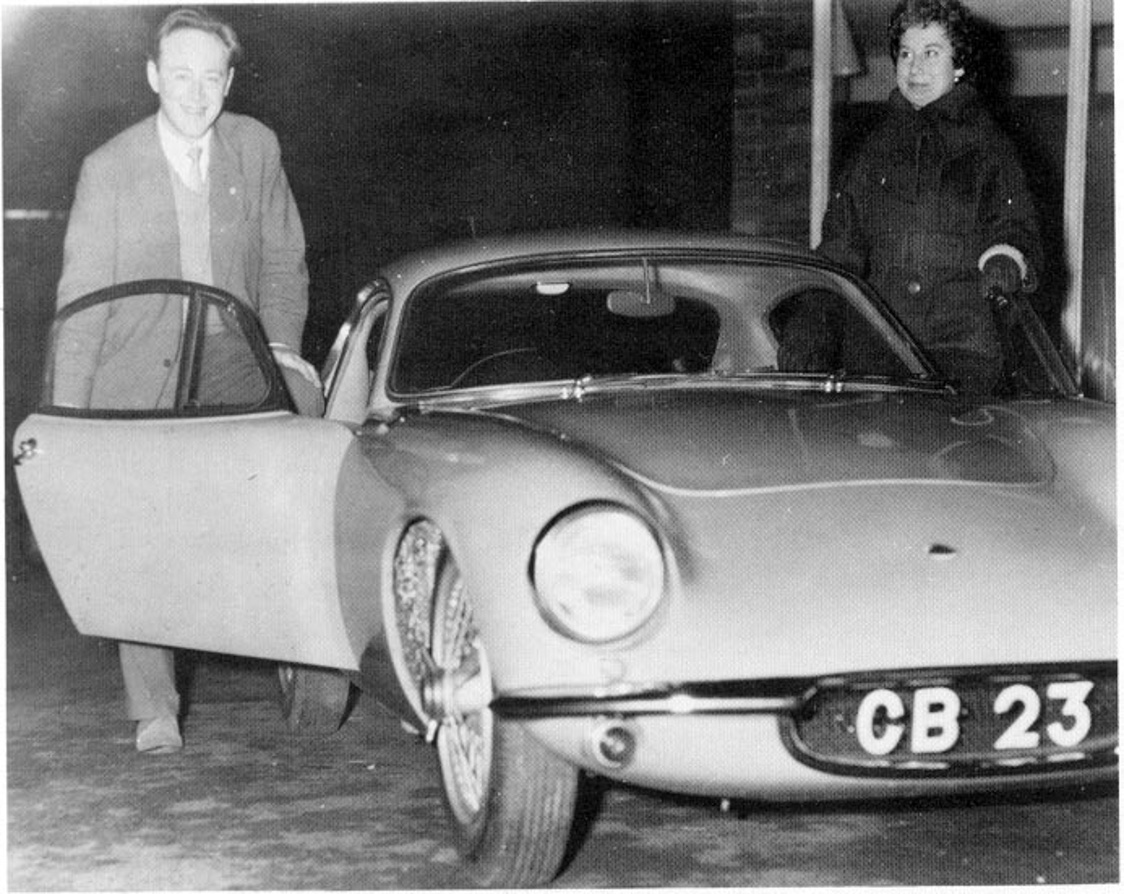
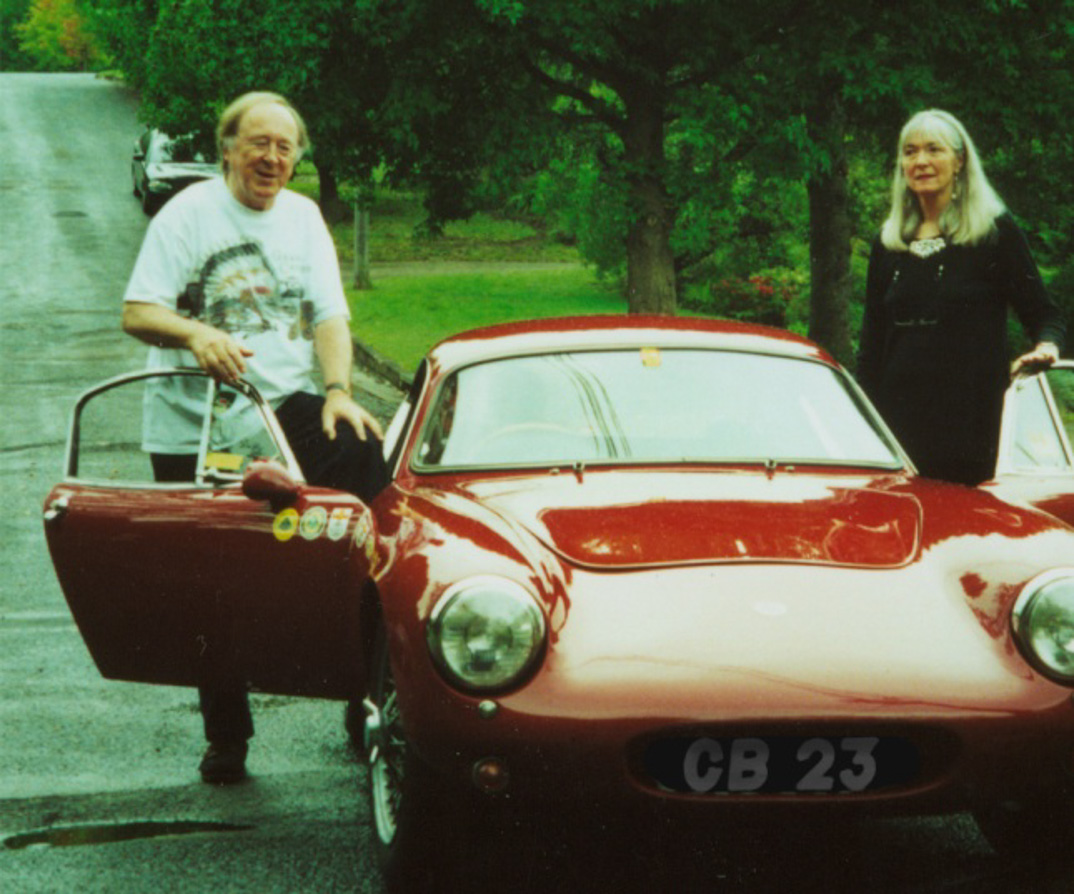
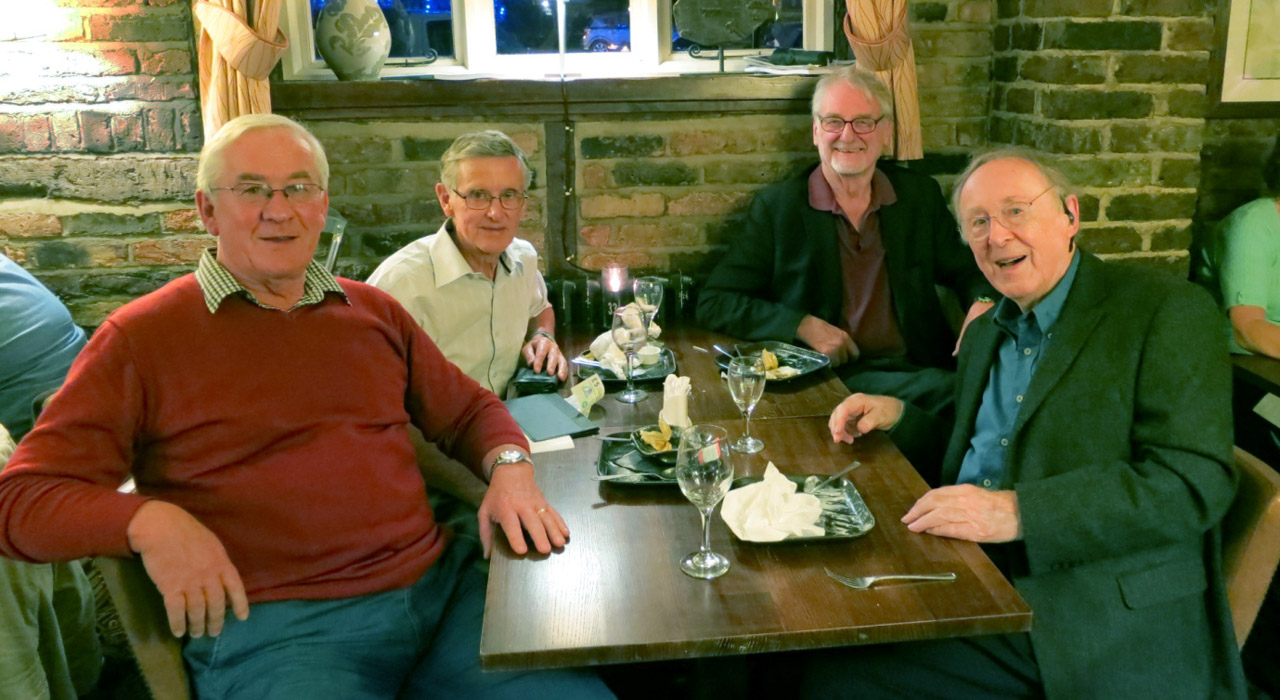
One Comment on “Lotus Stories: Brian Caldersmith”
Just come across this. A s a huge Chris Barber fan, we got involved with the “Down Under Tour” of Australia and NZ in 2000 and from then on, could virtually count on Chris as a friend.
In May 2004, I presented a painting of Chris racing his Elite at the 1962 Mallory Park meeting, organised by the Nottingham Sports car Club, Later on. I would be heavily involved with the NSCC as a director then when the club ceased racing, just sprints and hill-climbs, as competition secretary, until moving to NZ early 1983.
Sadly, Chris passed away March 2021, but he was always happy to chat about cars!